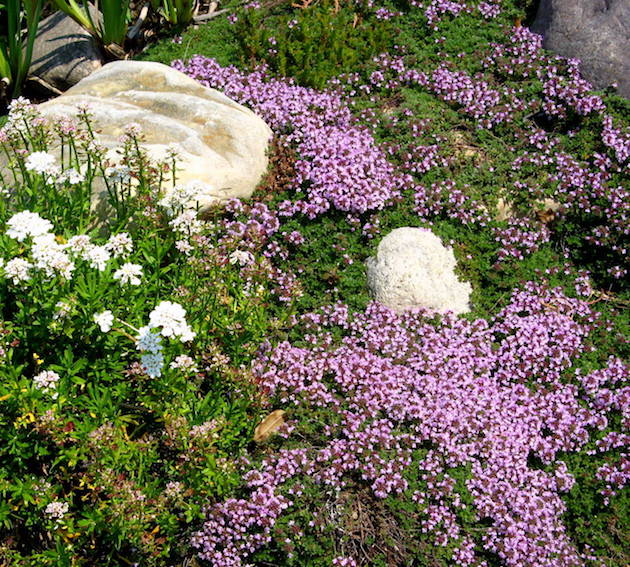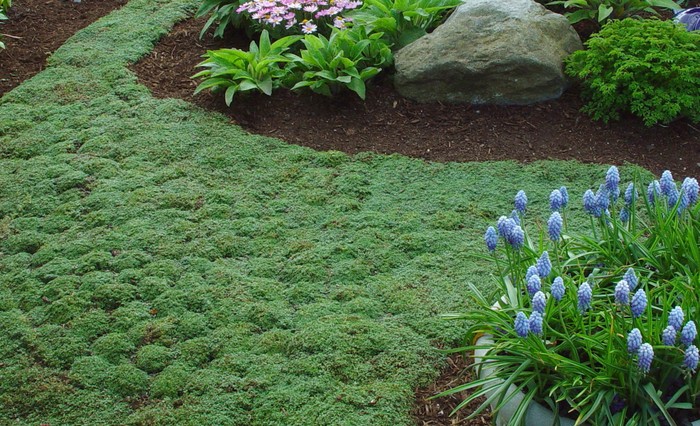

It stands up to heat but needs a little watering during prolonged dry spells.
#Elfin creeping thyme ground cover full
Dwarf mondo grass – Dwarf mondo grass is a good choice for full or partial shade, and it is one of the few plants you can grow near black walnuts.It bounces back after short periods of dry weather, but you’ll need to water it if the dry weather lasts very long. You can plant it in the sun, where it grows flat, or in the shade where it forms little hills.

It grows only an inch or 2 (2.5-5 cm.) tall, and you’ll enjoy its pleasant fragrance.

Just cut it to fit and lay it where you want it to grow. Only a couple of inches (5 cm.) tall, it doesn’t create an obstruction. Irish moss – Irish moss adds soft, spongy texture to paths in shady areas.Using plants that spread to fill the space around them make growing plants between pavers easier. Choose short plants that won’t obstruct your path, and plants that are suited to the current light exposure. Look for plants that are tough so you don’t have to tiptoe around them. When using groundcovers around pavers, you want them to meet several criteria. Wondering what to plant? This article can help. Prune creeping thyme ground cover in the spring to maintain a compact appearance and again after the small, white flowers are spent if additional shaping is preferred.Using plants between pavers softens the look of your pathway or patio and keeps weeds from filling in bare spaces. Plant creeping thyme 8 to 12 inches (20-30.5 cm.) apart to allow for its spreading habitat.

Start seeds when growing creeping thyme indoors or they may be sown in the spring after the danger of frost has passed. Cuttings from the creeping thyme plant should be taken in the early summer. The soil pH for growing creeping thyme plants should be neutral to slightly alkaline.Ĭreeping thyme ground cover can be propagated via stem cuttings or divisions and, of course, can be purchased from the local nursery as either established plantings or seeds. Soil should be kept moist but not wet, as the growing creeping thyme plant is susceptible to root drowning and edema. Although this ground cover prefers well-drained lightly textured soils, it will grow quite well in less than desirable medium and thrive from full sun to light shade environments.
#Elfin creeping thyme ground cover how to
How to Plant Creeping ThymeĪs mentioned, growing creeping thyme is a simple process due to its compatibility in a variety of soils and light exposures. In fact, the pollen from the blooming thyme will flavor the resulting honey. Creeping thyme is also capable of withstanding tromping upon by rambunctious kids (making it kid resistant as well!), which makes it an exceptional planting choice anywhere that has frequent foot traffic.įlowering creeping thyme is very attractive to bees and is a nice addition to a garden focused on honeybees. Harvest creeping thyme in the morning when the essential oils of the plant are at their peak.Īnother creeping thyme fact is despite its enticing odor, growing creeping thyme ground cover is deer resistant, making it an ideal landscape candidate in areas frequented by them. To harvest creeping thyme ground cover, either remove the leaves from the stems or dry them by snipping from the plant and hanging them upside down in a dark, well-aerated area. Just like other thyme varieties, creeping thyme is edible with a flavor and aroma akin to mint when crushed or steeped for teas or tinctures. serpyllum is another creeping thyme variety. will appear in low, dense mats, which sprawl randomly and quickly fill in areas as a ground cover. An evergreen with lightly haired foliage, this tiny-growing creeping thyme varietal - rarely over 3 inches or 7.5 cm. Thymus praecox is a low-growing perennial hardy in USDA hardiness zones 4-9 with fairly minimal requirements. Let’s learn more about creeping thyme plant care. It is excellent planted as a lawn substitute or among stepping stones or pavers to create a living patio. Creeping thyme, also known commonly as ‘Mother of Thyme,’ is an easily grown, spreading thyme variety.


 0 kommentar(er)
0 kommentar(er)
